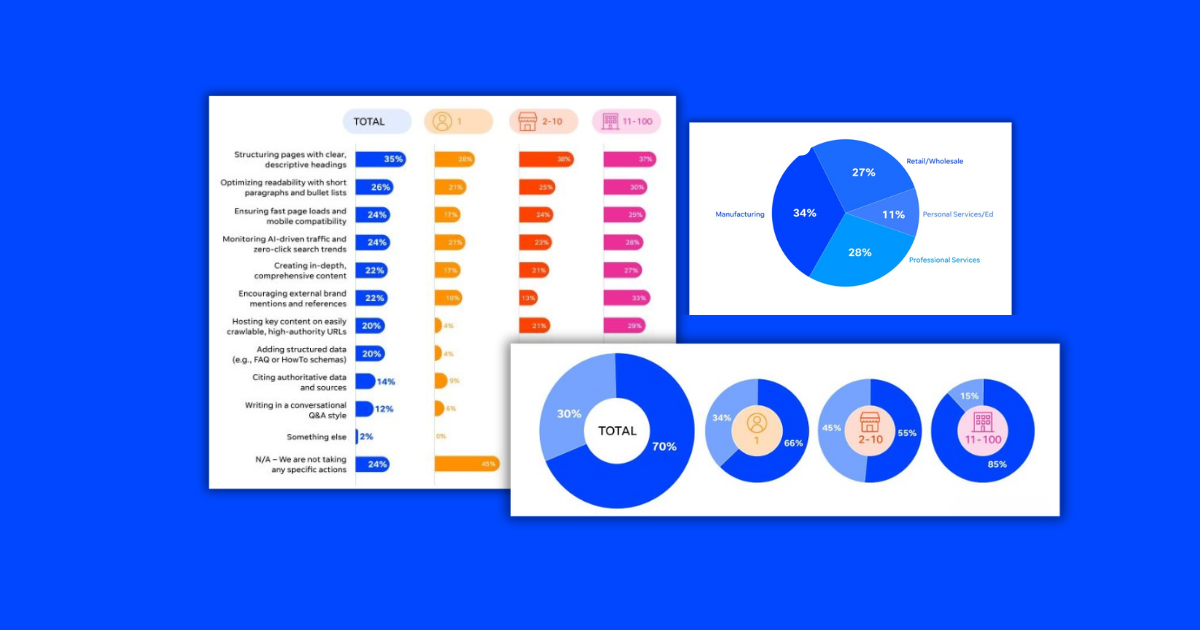Social listening helps businesses monitor and analyze online conversations to gain insights into customer opinions, preferences, and trends by tracking mentions, feedback, and discussions across various social media platforms and online forums. And now, smart small business owners are using this tactic as their secret weapon to better understand customers, outsmart competitors, and grow their businesses faster than ever before.
If you’re still thinking social listening is just for big corporations with massive marketing budgets, think again. By tuning in online, small businesses now have access to the same powerful insights that Fortune 500 companies use to make million-dollar decisions.
Contents
- What is social listening?
- Why social listening matters more than ever
- The new social listening landscape: What’s changed
- The new rules of social listening for small businesses
- Creating your social listening action plan
- Social listening tools
What is social listening?
Social listening is the process of monitoring online conversations to understand what people are saying about a business, topic, industry, and more.
But, it’s not just about tracking mentions and comments. Social listening also entails analyzing the tone, sentiment, themes, and trends behind what people are saying online.
⭐️ Get all the tips you need to collect more reviews in this free guide download >> How to Get More Reviews: 8 Tips to Boost Ranking, Reputation, & Revenue
Why social listening matters more than ever in 2026
It can be nearly impossible to keep up with what customers and prospects are saying about your business online in this day and age. But understanding sentiment about your business, common complaints, and what people love about you can help you improve almost every aspect of your business, so it’s something you can’t just ignore.
Businesses can use social listening to:
- Track and understand brand reputation
- Identify customer pain points and needs
- Monitor competitors and spot industry trends
- Find potential micro-influencers or UGC providers
- Gather insights to streamline processes and build consumer-coveted offerings
- And so much more
Data shows 61% of businesses have already implemented social listening systems to monitor keyword mentions, but most small businesses are still missing out on this goldmine of customer intelligence. While your competitors are guessing what customers want, you could be listening to exactly what they’re saying.
The current social listening landscape: What’s changed
The social listening market is expected to reach $9.61 billion in 2025. That’s not just growth; that’s explosive demand from businesses that’ve discovered that tuning into their customers online can unlock important insights and early trends, giving them a competitive edge.
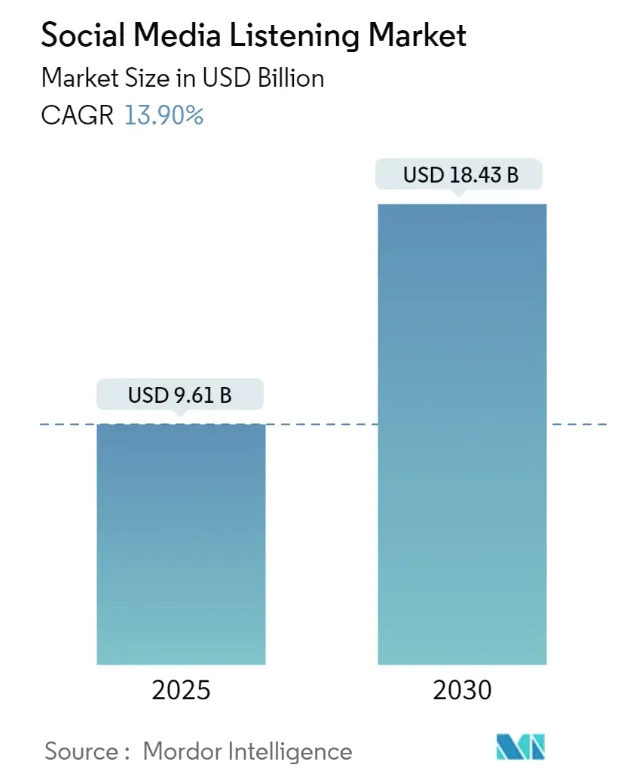
The shift we’re seeing isn’t just about technology—it’s about moving from reactive customer service to proactive customer engagement.
Artificial intelligence, natural language processing, and advanced analytics have completely transformed what’s possible with social listening. We’re not talking about simple keyword alerts anymore. Today’s tools can understand context, detect sarcasm, identify emerging trends, and even predict customer behavior patterns.
The technology can now tell you not just that someone mentioned your brand, but how they felt about it, what specific aspect they were discussing, and whether their sentiment is improving or declining over time. It’s like having a team of market researchers working 24/7, analyzing every conversation about your industry.
This is important, considering that global advertising spending is expected to exceed $276 billion in 2025. With so much competition for attention, every marketing dollar needs to work harder, and social listening helps prove ROI on social media investment through concrete metrics like engagement rates, share of voice, and sentiment improvements.
The new rules of social listening for small businesses
Now that you understand why social listening is so important, let’s move on to some of the new rules that are shaping success for businesses of all sizes.
Rule #1: Focus on micro-virality over mass appeal
Forget about trying to create the next viral TikTok dance. Today, successful brands are focusing on smaller-scale, audience-focused virality within their specific niches. This means tracking trends that matter to your actual customers, not chasing whatever’s trending globally.
Instead of blindly following mainstream trends, start tracking conversations that provide actionable insights specific to your niche. A local coffee shop doesn’t need to know about the latest celebrity drama, but they absolutely need to know when their customers starts talking about matcha or gluten-free options.
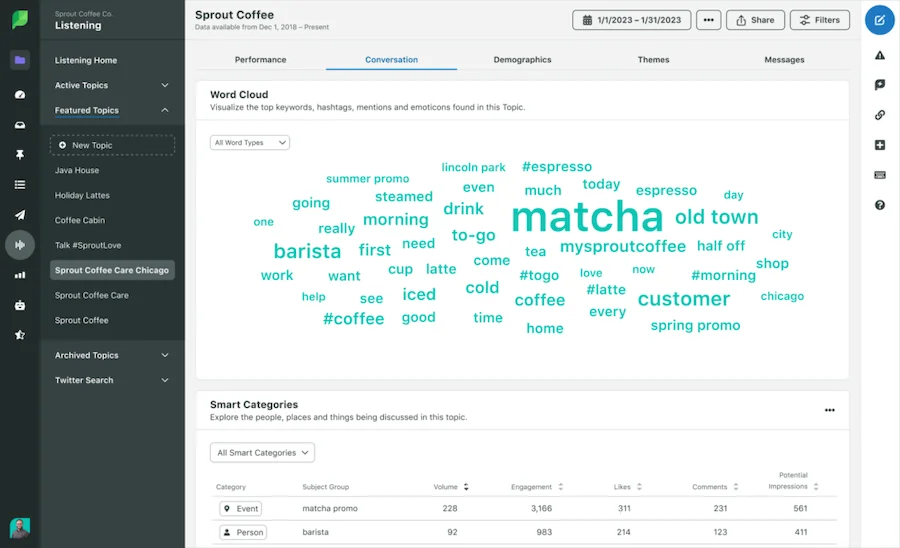
🚨 Get copy-and-paste social media posts ready for the whole year in our free social media template!
Rule #2: Listen beyond your brand
This is where most small businesses make their biggest mistake: they only monitor mentions of their own brand name. The real goldmine, however, is in listening to industry conversations, competitor mentions, and emerging customer needs that haven’t been addressed yet.
For example, a clothing boutique might discover that conversations about sustainable fashion are increasing in their target demographic, even when their brand isn’t mentioned. This insight could inform everything from product development to marketing messaging, giving them a significant competitive advantage.
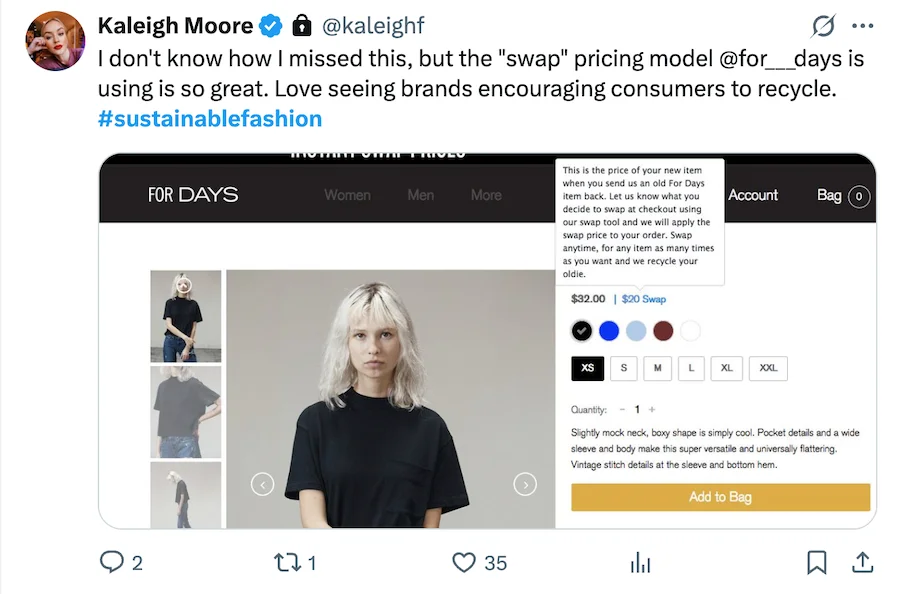
Rule #3: Act on unexpected discoveries
Social listening can uncover surprising opportunities (if you’re paying attention.) For example, suppose you own a small business that sells a supplement designed to help alleviate migraines. If you were monitoring general wellness conversations, you may learn that people who have hobbies requiring intense focus, like knitting or Sudoku, frequently mention eye strain and migraines in online communities.
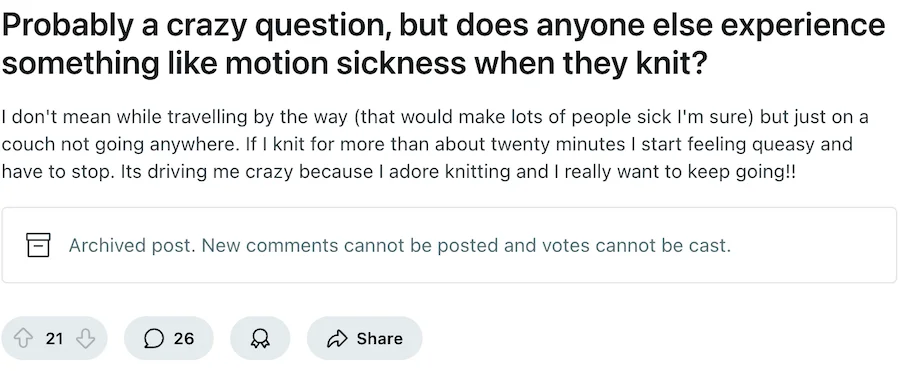
This discovery could help your business lean into targeted product positioning and content strategy focused on this specific audience. What started as general health monitoring could quickly become a targeted campaign that resonates with a passionate, underserved community.
Rule #4: Integrate multiple data sources
Social listening isn’t meant to exist in isolation. The most successful small businesses combine social listening data from various sources with sales information, customer surveys, and website analytics to create comprehensive customer journey maps.
This integrated approach helps you understand not just what customers are saying but also how those conversations connect to actual purchasing behavior. For example, you might discover that negative sentiment about a competitor’s customer service correlates with increased traffic to your website or that conversations about specific features predict seasonal sales patterns.
Creating your social listening action plan
Here’s a practical guide to make social listening an easy part of your marketing strategy.
Week 1: Foundation setting
Define your listening objectives and key performance indicators. Choose a tool that fits your budget and needs, and then set up initial monitoring for your brand name, key competitors, and primary industry keywords.
Weeks 2-4: Data collection and analysis
Focus on gathering baseline data across all relevant channels. Identify patterns in mention volume, sentiment trends, and conversation topics. Create your first response protocols and train team members on escalation procedures.
Months 2-3: Optimization and integration
Based on initial findings, refine your keyword lists. Integrate insights into your marketing strategies and product development discussions. Establish regular reporting rhythms that align with your business planning cycles.
Ongoing: Scale and sophistication
As your business grows and your understanding deepens, add new monitoring categories. Invest in more advanced tools and features that provide predictive capabilities and deeper analytical insights.
Social listening tools
You’re armed with tips and your action plan–now what? We’re breaking down three popular tools and then rounding up some others to explore. Keep in mind that social listening tools are typically enterprise-level, meaning they can be on the pricier side.
Sprout Social
Sprout is a social media management tool with its own social listening feature—available as an add-on to its plans.
It includes the ability to help you do:
- Sentiment research
- Industry and trend analysis
- Influencer recognition
- Customer feedback tracking
- And more

Who it’s good for: Businesses already using Sprout for social media management who want more active monitoring.
Brandwatch
Brandwatch is an intelligence platform built to help businesses analyze social media and online conversations with its tools. It includes social media management features but is built to help businesses monitor online conversations and make data-driven decisions based on them.
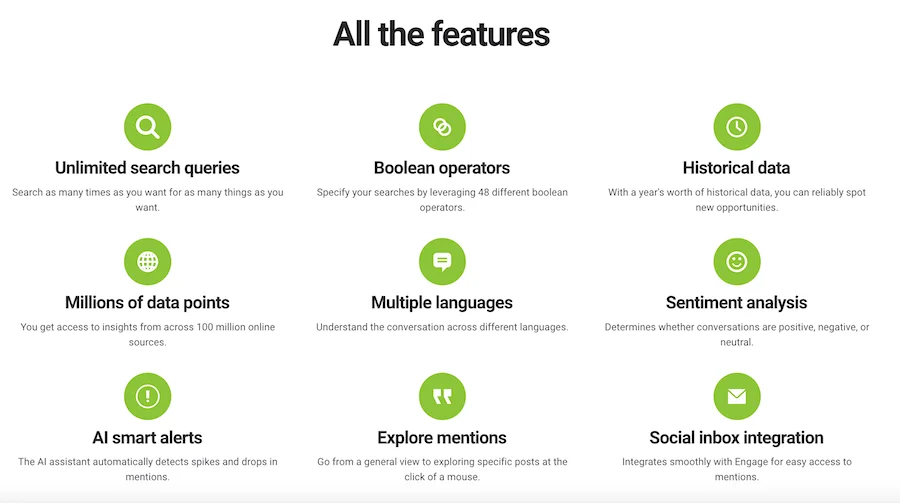
Who it’s good for: Businesses in need of in-depth data analysis.
Meltwater
Meltwater provides social media listening and analytics tools. It can help you monitor brand mentions, understand your audience, gather reports, and collaborate across teams to take action on anything that comes into the monitoring feed.
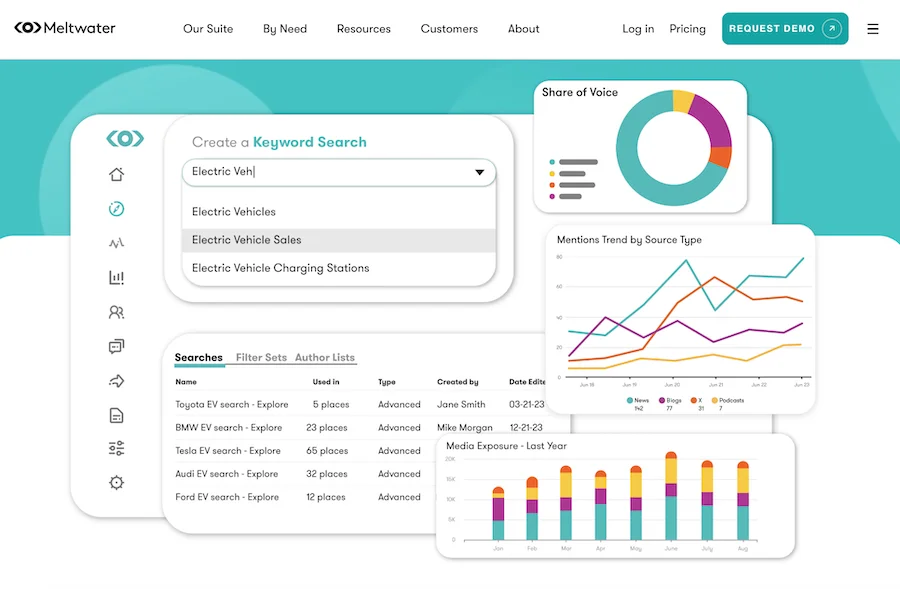
Who it’s good for: Businesses with cross-functional teams who may need to collaborate or manage crises based on social media mentions. They also have a solution built just for small businesses.
More popular social listening tools
Here are some other tools to look into if the above don’t meet your needs (or budget):
Your social listening advantage in 2026
Social listening has evolved from a nice-to-have marketing activity into a business-critical intelligence system. Small businesses that master these new rules can gain competitive advantages through deeper customer understanding, faster market response, and more effective resource allocation.
As you lean into social listening, remember to:
- Invest in team training and capability development to maximize your social listening investment.
- Build flexible monitoring frameworks that can adapt as new platforms and conversation formats emerge.
- Stay updated on new platform features and tools, and consider AI-powered automation opportunities that can scale your efforts without increasing costs.
The key is starting with clear objectives, choosing the right tools for your budget, and building systematic processes that turn insights into action. You don’t need a Fortune 500 budget to compete with Fortune 500 insights–you just need to start listening to what your customers are already telling you.
The businesses that thrive in 2026 won’t just be listening. They’ll be hearing, understanding, and acting on what their customers are saying.


